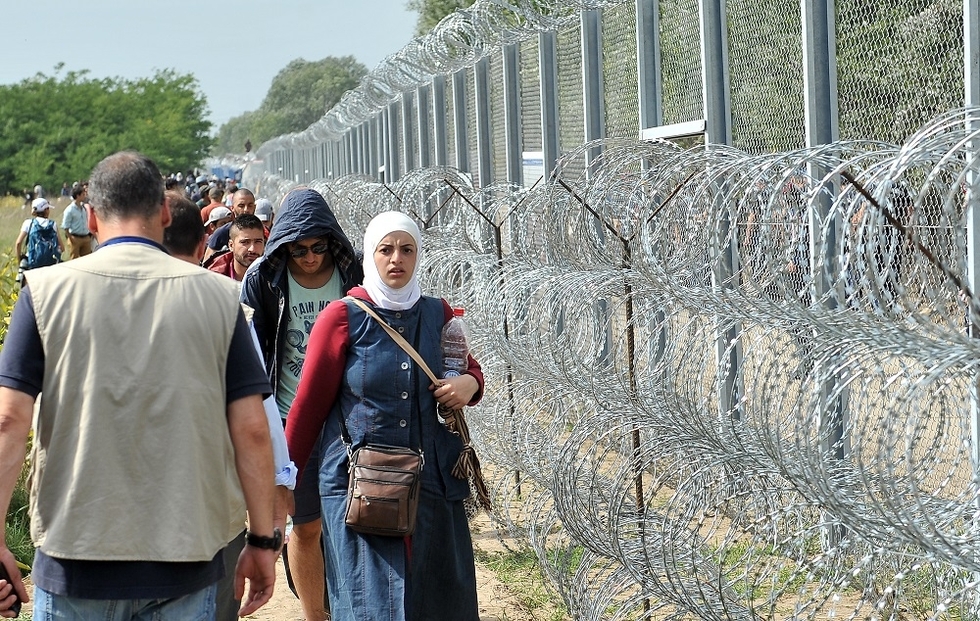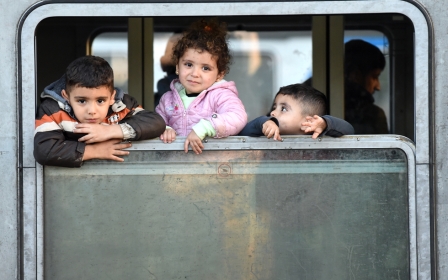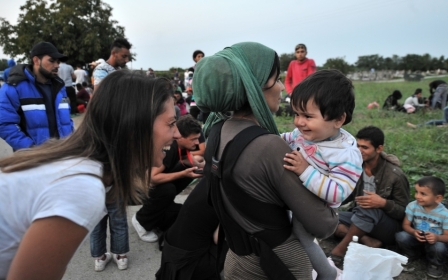Disabled refugees among thousands prosecuted by Hungary for crossing border

The Hungarian government has begun prosecuting Syrian refugees trying to cross the border after riots in September 2015.
Ten Syrians and Iraqis were brought to trial from detention on Thursday. They were not only handcuffed, but tethered to police officers at the hearing.
If convicted, these refugees could face up to five years in prison.
In some cases, police testified that a number of refugees, including a 64-year-old woman who can barely see and a man in a wheelchair missing a leg, were not part of the riots.
Hungarian authorities closed the border after hundreds of thousands of refugees crossed it over the summer. Those trapped along the Serbian-Hungarian border after the closure resorted to rioting.
Since the riots, over 2,500 people have been brought to court in Hungary for trying to cross the border.
According to a Channel 4 report, 99 percent of those have been convicted.
Also in the report, a holding pen on the border with Serbia allows some 20 Syrian refugees to enter per day but authorities allegedly said to UNHCR that it could accommodate up to 100 migrants each day, leaving many in squalid conditions on the Serbian side.
Just outside the holding pen, on the Serbian border, lies a large refugee camp. There’s no electricity, toilets and only a single water faucet. The refugees must either wait to be allowed in the holding pen by Hungarian authorities or pay a smuggler to cut a hole in the fence, incriminating their entrance and jeopardising their passage through the country.
Back in September, the UN refugee agency, UNHCR, expressed concern about the management of the refugees and the situation on the border. Monserrat Feixas Vihe, a regional representative for UNHCR in Central Europe, said that the system was at breaking point.
"There are two pre-registration centres, full of people and the conditions in which people live are not decent at all,” he said.
Disturbing images emerged of Hungarian security officials throwing bags of food to cooped-up refugees and migrants. The Austrian volunteer who filmed the scenes said that the refugees and migrants were being treated “like animals”.
Most of those who enter Hungary try to avoid registration in the camps and prefer to pass through to neighbouring Austria – from where they often make their way further north - undetected.
Around 400,000 refugees crossed Hungary in 2015, but that number drastically declined to 7,000 thus far in 2016 as a result of the border fence.
New MEE newsletter: Jerusalem Dispatch
Sign up to get the latest insights and analysis on Israel-Palestine, alongside Turkey Unpacked and other MEE newsletters
Middle East Eye delivers independent and unrivalled coverage and analysis of the Middle East, North Africa and beyond. To learn more about republishing this content and the associated fees, please fill out this form. More about MEE can be found here.




